Pass Labs XP-25 Phono Stage: Is It That Much Better Than The Xono?

DarqueKnight
Posts: 6,765
Introduction
I recently replaced the Pass Labs Xono phono stage that was purchased in November of 2006. I had some concerns about diminishing returns since the XP-25 retails for 2.5X the price of the Xono. I found that the XP-25 really is that much better than the Xono:
1. Much More holographic.
2. More detailed.
3. Heavier images.
4. More depth and layering.
5. More clarity.
Whether is it worth the cost premium over the already excellent Xono depends on how much someone values improvements in stereophonic attributes such as image layering, image weight and sonic realism.
The dealer allowed a two week trial period and a generous trade-in allowance. I did not need the two week trial because the sonic improvements were immediately and plainly obvious. The Xono was shipped back to the dealer for trade in credit the day after I received the XP-25. This was after staying up until 4 am going through my record collection.
In addition to the sonic improvements, I appreciate the XP-25's ergonomic improvements that have brought loading and gain adjustments to the front panel. The Xono's cartridge loading and gain adjustments were made with internal switches after taking the top cover off. Low noise internal switches were used to avoid introducing "noisy" rotary switches in the signal path. For people with multiple tonearms and multiple cartridges, this was a major inconvenience. There have been some recent significant improvements in rotary switching devices that allowed their use without compromising noise performance over what would occur with internal switches.
The only thing I don't like about the XP-25 is the control chassis' increased sensitivity to magnetic fields. As shown in figure 6, the XP-25's control chassis sits above the left side Parasound Halo JC 1 monoblock amplifier. The JC 1 causes a faint hum in both channels. I use the maximum gain setting of 76 dB and the hum cannot be heard at the listening position.
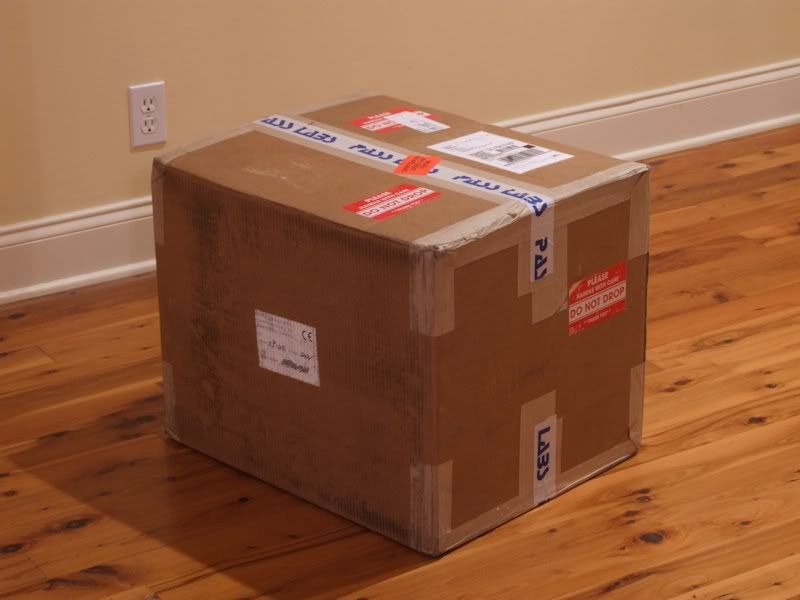
Figure 1. My Pass Labs gear always arrives in a big box with plenty of stickers and security tape announcing the contents. I'd prefer a plain brown box with "fragile" stickers.
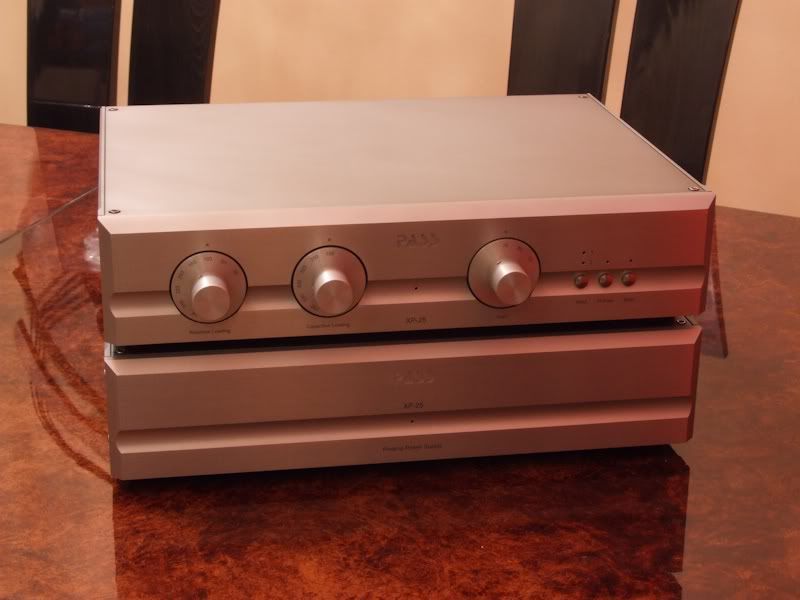
Figure 2. Pass Labs XP-25 control chassis (top) and power supply chassis.

Figure 3. The XP-25 is not a refinement of the Xono phono stage. It is a completely new design.

Figure 4. The XP-25 has inputs for two tonearms compared to the Xono's one tonearm input.
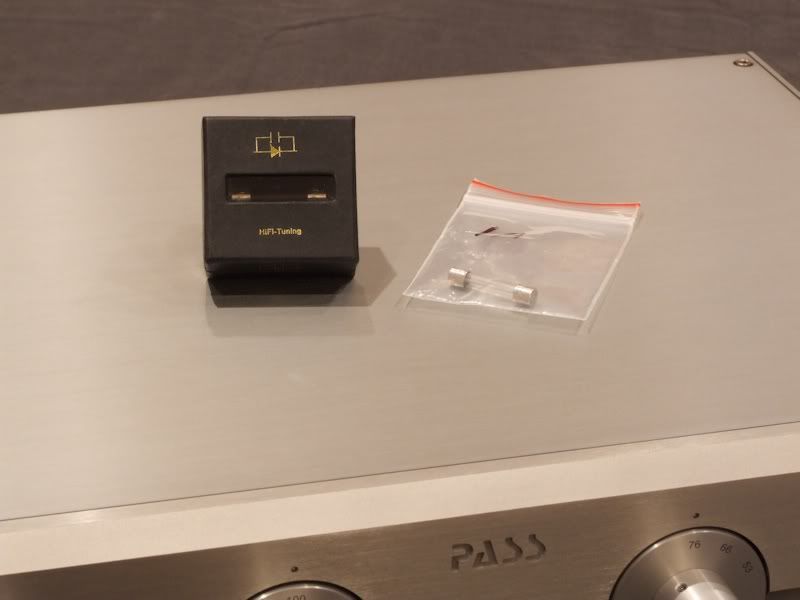
Figure 5. Don't forget to light the fuse! The stock tin fuse was replaced with an audio grade HiFi Tuning Supreme fuse.
Installing a HiFi Tuning fuse in the XP-25 did not bring the degree of improvements in clarity, sound stage dimensions and imaging as it did with the Xono. This was not surprising since the XP-25 has better noise performance than the Xono. As with the Xono, the best sound was heard with the fuse arrow pointing away from the point at which AC enters the unit. In the case of the Xono and XP-25, this point is the rear end (the end closest to the rear of the unit) of the fuse receptacle. The point of AC entry can be determined by testing for continuity between the "line" IEC socket blade and both ends of the fuse receptacle.
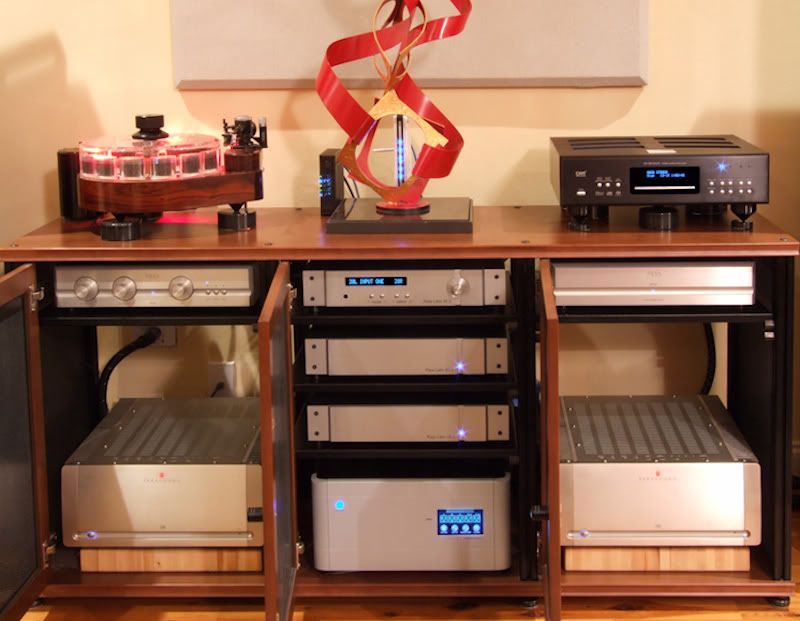
Figure 6. The large silver thing between the JC 1 amps is a PS Audio PerfectWave P10 AC regenerator (review coming).
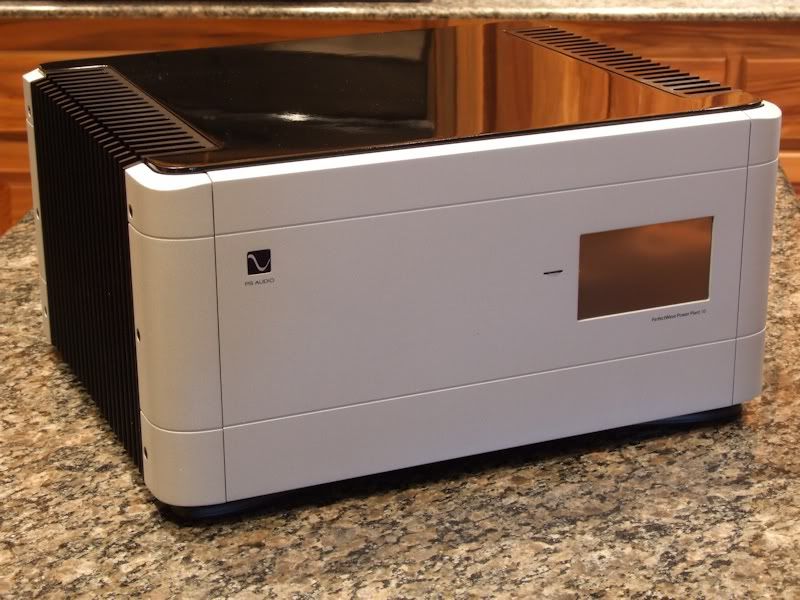
Figure 7. The P10 replaced a PS Audio Power Plant Premier.

Figure 8. The P10 features Power Port Premier receptacles. People complained bitterly that the Power Plant Premier did not offer Power Port Premier receptacles.
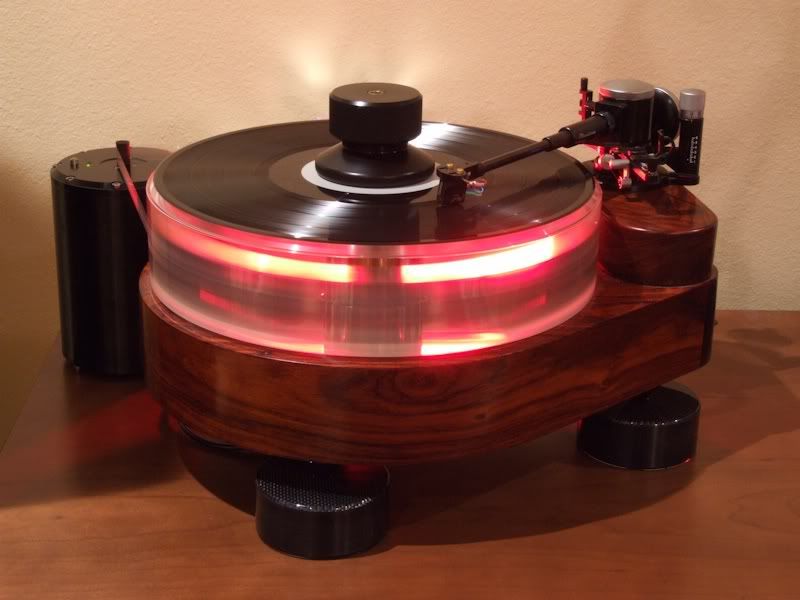
Figure 9. You're pretty, yet so barbaric. I wish I knew how to quit you...but I won't be able to until all my favorite records are transferred to hi-rez digital. Who would have thought that Such Good Sound could come from dragging a rock through plastic grooves?
I recently replaced the Pass Labs Xono phono stage that was purchased in November of 2006. I had some concerns about diminishing returns since the XP-25 retails for 2.5X the price of the Xono. I found that the XP-25 really is that much better than the Xono:
1. Much More holographic.
2. More detailed.
3. Heavier images.
4. More depth and layering.
5. More clarity.
Whether is it worth the cost premium over the already excellent Xono depends on how much someone values improvements in stereophonic attributes such as image layering, image weight and sonic realism.
The dealer allowed a two week trial period and a generous trade-in allowance. I did not need the two week trial because the sonic improvements were immediately and plainly obvious. The Xono was shipped back to the dealer for trade in credit the day after I received the XP-25. This was after staying up until 4 am going through my record collection.
In addition to the sonic improvements, I appreciate the XP-25's ergonomic improvements that have brought loading and gain adjustments to the front panel. The Xono's cartridge loading and gain adjustments were made with internal switches after taking the top cover off. Low noise internal switches were used to avoid introducing "noisy" rotary switches in the signal path. For people with multiple tonearms and multiple cartridges, this was a major inconvenience. There have been some recent significant improvements in rotary switching devices that allowed their use without compromising noise performance over what would occur with internal switches.
The only thing I don't like about the XP-25 is the control chassis' increased sensitivity to magnetic fields. As shown in figure 6, the XP-25's control chassis sits above the left side Parasound Halo JC 1 monoblock amplifier. The JC 1 causes a faint hum in both channels. I use the maximum gain setting of 76 dB and the hum cannot be heard at the listening position.

Figure 1. My Pass Labs gear always arrives in a big box with plenty of stickers and security tape announcing the contents. I'd prefer a plain brown box with "fragile" stickers.

Figure 2. Pass Labs XP-25 control chassis (top) and power supply chassis.

Figure 3. The XP-25 is not a refinement of the Xono phono stage. It is a completely new design.

Figure 4. The XP-25 has inputs for two tonearms compared to the Xono's one tonearm input.

Figure 5. Don't forget to light the fuse! The stock tin fuse was replaced with an audio grade HiFi Tuning Supreme fuse.
Installing a HiFi Tuning fuse in the XP-25 did not bring the degree of improvements in clarity, sound stage dimensions and imaging as it did with the Xono. This was not surprising since the XP-25 has better noise performance than the Xono. As with the Xono, the best sound was heard with the fuse arrow pointing away from the point at which AC enters the unit. In the case of the Xono and XP-25, this point is the rear end (the end closest to the rear of the unit) of the fuse receptacle. The point of AC entry can be determined by testing for continuity between the "line" IEC socket blade and both ends of the fuse receptacle.

Figure 6. The large silver thing between the JC 1 amps is a PS Audio PerfectWave P10 AC regenerator (review coming).

Figure 7. The P10 replaced a PS Audio Power Plant Premier.

Figure 8. The P10 features Power Port Premier receptacles. People complained bitterly that the Power Plant Premier did not offer Power Port Premier receptacles.

Figure 9. You're pretty, yet so barbaric. I wish I knew how to quit you...but I won't be able to until all my favorite records are transferred to hi-rez digital. Who would have thought that Such Good Sound could come from dragging a rock through plastic grooves?
Proud and loyal citizen of the Digital Domain and Solid State Country!
Post edited by DarqueKnight on
Comments
-
DK is that a George Warren TT?2-channel: Modwright KWI-200 Integrated, Dynaudio C1-II Signatures
Desktop rig: LSi7, Polk 110sub, Dayens Ampino amp, W4S DAC/pre, Sonos, JRiver
Gear on standby: Melody 101 tube pre, Unison Research Simply Italy Integrated
Gone to new homes: (Matt Polk's)Threshold Stasis SA12e monoblocks, Pass XA30.5 amp, Usher MD2 speakers, Dynaudio C4 platinum speakers, Modwright LS100 (voltz), Simaudio 780D DAC
erat interfectorem cesar et **** dictatorem dicere a -
^^^It is a Teres Audio Model 255 turntable with Graham Phantom I tonearm and Ortofon MC Windfeld cartridge.Proud and loyal citizen of the Digital Domain and Solid State Country!
-
Beautiful is all I can say!!!
-
TOOLFORLIFEFAN wrote: »Beautiful is all I can say!!!
Yes Sir2-channel: Modwright KWI-200 Integrated, Dynaudio C1-II Signatures
Desktop rig: LSi7, Polk 110sub, Dayens Ampino amp, W4S DAC/pre, Sonos, JRiver
Gear on standby: Melody 101 tube pre, Unison Research Simply Italy Integrated
Gone to new homes: (Matt Polk's)Threshold Stasis SA12e monoblocks, Pass XA30.5 amp, Usher MD2 speakers, Dynaudio C4 platinum speakers, Modwright LS100 (voltz), Simaudio 780D DAC
erat interfectorem cesar et **** dictatorem dicere a -
Interesting that the phono pre can pick up hum that far above the amps. Very nice system, both in gear and display.Lumin X1 file player, Westminster Labs interconnect cable
Sony XA-5400ES SACD; Pass XP-22 pre; X600.5 amps
Magico S5 MKII Mcast Rose speakers; SPOD spikes
Shunyata Triton v3/Typhon QR on source, Denali 2000 (2) on amps
Shunyata Sigma XLR analog ICs, Sigma speaker cables
Shunyata Sigma HC (2), Sigma Analog, Sigma Digital, Z Anaconda (3) power cables
Mapleshade Samson V.3 four shelf solid maple rack, Micropoint brass footers
Three 20 amp circuits. -
DarqueKnight wrote: »The only thing I don't like about the XP-25 is the control chassis' increased sensitivity to magnetic fields. As shown in figure 6, the XP-25's control chassis sits above the left side Parasound Halo JC 1 monoblock amplifier. The JC 1 causes a faint hum in both channels. I use the maximum gain setting of 76 dB and the hum cannot be heard at the listening position.
Although I couldn't hear the hum at the listening position, I could hear it when I was changing records or if I played at louder than normal levels. Even more than this, I speculated that the audible noise (hum) induced by the power amplifier's magnetic field might be doing something unpleasant to my analog sound quality. I wanted it GONE. Pass Labs suggested sheets of inexpensive cold rolled steel rather than the very expensive mu metal. I ordered four sheets of 18 gauge (0.048" thick) low carbon cold rolled steel cut to the same width and depth as the shelf the XP-25 sits on. I also ordered four long, narrow sheets to use as double shields on each side of the XP-25. The total cost, inclusive of shipping, was $91.16. The vendor was Allmetal.com.
Figure 1. Hum busters: 18 gauge low carbon cold rolled steel sheets.
I do not have a gauss meter, therefore I could not measure the reduction in field strength. However, a gauss meter really was not needed to tell me if the hum was reduced. I placed an analog sound level meter one foot in front of the left speaker and 45 inches high. The X0.2 preamp's volume control was turned up to 60 (corresponds to between 3 o'clock and 4 o'clock). The hum registered a sound level of 75 dB-C.
I placed an analog sound level meter one foot in front of the left speaker and 45 inches high. The X0.2 preamp's volume control was turned up to 60 (corresponds to between 3 o'clock and 4 o'clock). The hum registered a sound level of 75 dB-C.
For reference, the X0.2's digital readout volume control goes from 0 (off) to a minimum sound level of 1 to maximum level of 71 in steps of 1. Each step roughly corresponds to 1 dB. The X0.2's dB levels correspond to "clock dial" volume levels as follows:
1 dB - 7 o'clock.
8 dB - 8 o'clock.
15 dB - 9 o'clock.
22 dB - 10 o'clock.
29 dB - 11 o'clock.
36 dB - 12 o'clock.
43 dB - 1 o'clock.
50 dB - 2 o'clock.
57 dB - 3 o'clock.
64 dB - 4 o'clock.
71 dB - 5 o'clock.
Shielding Procedure
Placing a steel sheet above or to either side of the XP-25 had no effect on the hum. Placing steel sheets below the shelf had the greatest effect.
The first steel sheet reduced the hum to 70.5 dB-C.
The second sheet reduced the hum to 68.5 dB-C.
The third sheet reduced the hum to 66 dB-C.
The fourth sheet reduced the hum to 64 dB-C.
Placing the remaining four narrow side-sheets under the left side of the XP-25, where the input circuits are located, provided further hum reduction:
The first sheet reduced the hum to 63 dB-C.
The second sheet reduced the hum to 62.5 dB-C.
There was no change after adding the third sheet.
The fourth sheet reduced the hum to 62 dB-C.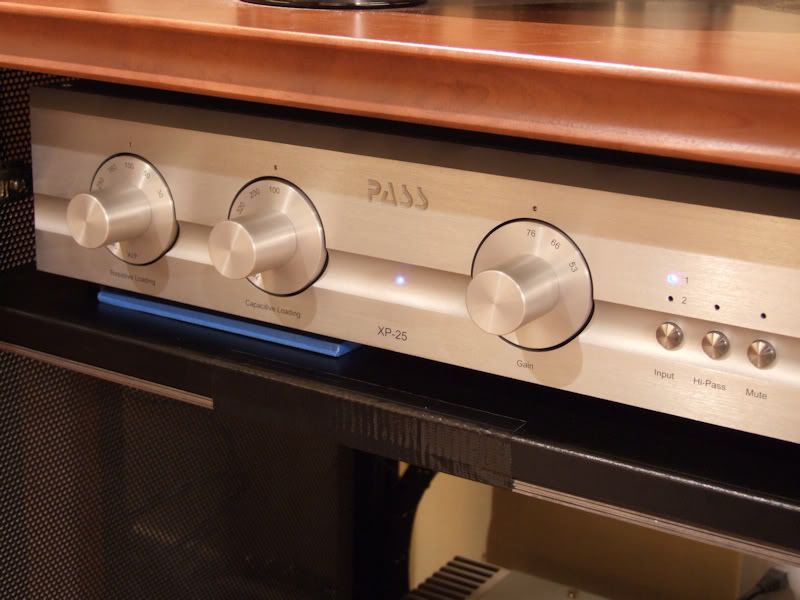
Figure 2. Four steel sheets under the XP-25's shelf. The blue strip under the XP-25 is the edge of four narrow
steel sheets stacked and taped together.
To facilitate easier installation, the XP-25 was suspended over its shelf by running a piece of speaker wire (Monster XP) under the left and right sides and over the top of the equipment cabinet. Steel sheets were taped to the bottom of the shelf and the assembly was easily placed on the shelf brackets.
Figure 3. The steel sheet stacks became virtually invisible after applying black duct tape to the stack edges.
Standing one foot in front of either speaker, with the volume control at normal listening levels (between 22-28 (corresponding to between 10 o'clock and 11 o'clock)), the hum is inaudible. Standing one foot in front of either speaker and starting at a volume level of 60 (between 3 o'clock and 4 o'clock) , the hum first becomes inaudible with the volume control reaches 42 (just before 1 o'clock).
Conclusion
I did not do any signal quality measurements or critical listening immediately prior to and after the hum abatement exercise. Nothing jumped out at me as being different or improved. However, hearing dead silence whenever I go to change records was worth the nearly hundred bucks this cost.Proud and loyal citizen of the Digital Domain and Solid State Country!


